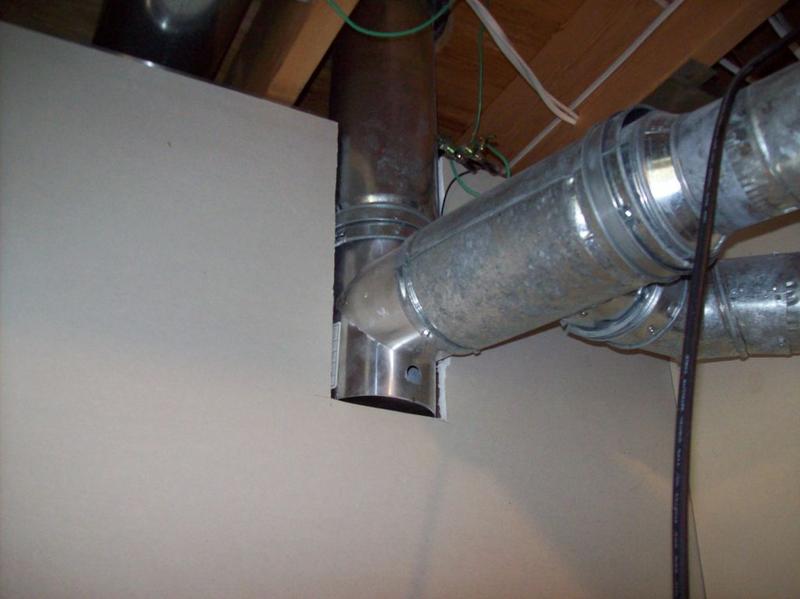Sometimes you just have to wonder at what you see.
I noticed they used a tee at the bottom of the riser, which should have been an elbow so it doesn’t trap moisture.
There is a drain hole in the tee and this is a very common installation.
Is that just capped with a hole in the tee? It didnt look like a “drain tee” … typically only used for Z vent locally.
I see these often Robert.
Nothing unusual.
It’s not a condensing furnace.
Caulk shrinkage. Needs to be recaulked.
Maybe add some foil tap too ![]()
I would hope it’s not, since that is B-Vent … :shock:
Thats what makes me question the use of a tee with provisions for drainage. I would typically only see that for a chimney/flue on condensing equipment. A B-Vent chimney with standard equipment would typically just have an elbow at the base, since there isn’t a significant concern about condensate or moisture at the chimney bottom with a proper rain cap.
I would be concerned with field drilling a hole in the side of a manufactured product, no matter how common it was. And moisture would have to sit in the base, and then spill over into the double wall space before it even reached the hole. Not good, as any minor amounts of moisture in conventional venting should drain back to the equipment where it’s burned off (from mfr instructions on every standard furnace/boiler I have worked on).
Attached is a pic of a manufactured vertical drain tee typically used for mid-efficiency equipment (Z Vent), with provisions for positive drainage, with no trapped moisture.
Just my take on things … ![]()
.

I have never seen the one you pictured, Robert.
I have seen the one I did many many times.
FWIW, the furnace was a mid efficiency draft assisted unit.
Thats a manufactured specialty product, but I probably would be okay with something similar that is field assembled … say a field drilled hole in a cap at the base of the tee … not the tee itself. And I would still be concerned with access to the tee cap in order to clean out any debris.
P.S. How often do you see double-lug neutral wires in a panel … 
Too often about 20% I think … Roy
Many do not know this can burn out equipment more often the Double Taps on the hot wires
Double lugged neutrals are a problem.
Neutral paired with safety ground of same circuit. Not so much.
Nevertheless still an NEC violation. ![]()
And I write it up every time.
Agreed … and I also make a note of that as a concern because there are still issues with that … even though I see it all the time … :idea:
No matter how common it might be in an area, I think there is a valid concern with the long term integrity of venting where a tee is used at the base of a flue riser instead of an elbow, and there isn’t an accessible cap with drainage provisions at the lowest point of the fitting (e.g. a small drain hole in the cap) … maybe there was one.
Without it it seems to me there would be the potential for long term corrosion of the fitting from moisture just sitting in the base … or possibly even clogging if the cap can’t be accessed. But at least the hole in the side gives you a view of the fitting base to see if it is full of moisture or debris and needs to be cleaned out … ![]()
Only 20%??
It’s the other way around here…I see about 80%–older or newer houses–double-lugged neutrals, neutrals with ground wire, and double-tapped breakers or service entry lugs.
I bet I could make a pretty good living getting “rewards” from the electricians.


